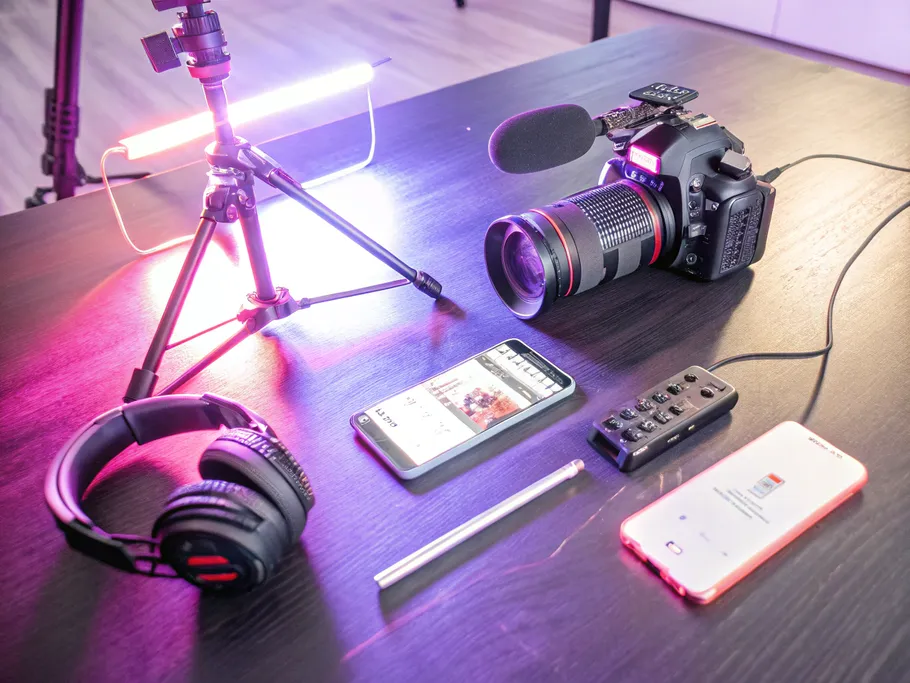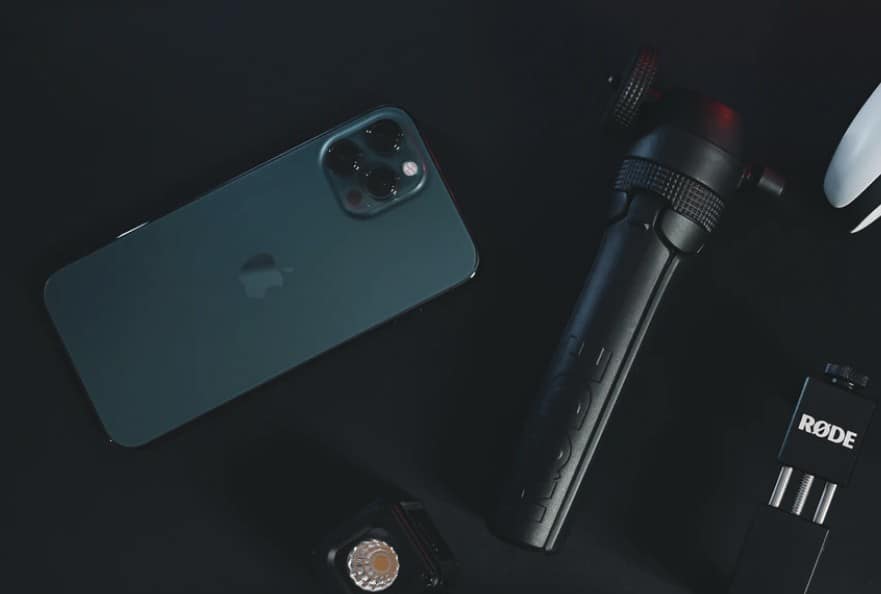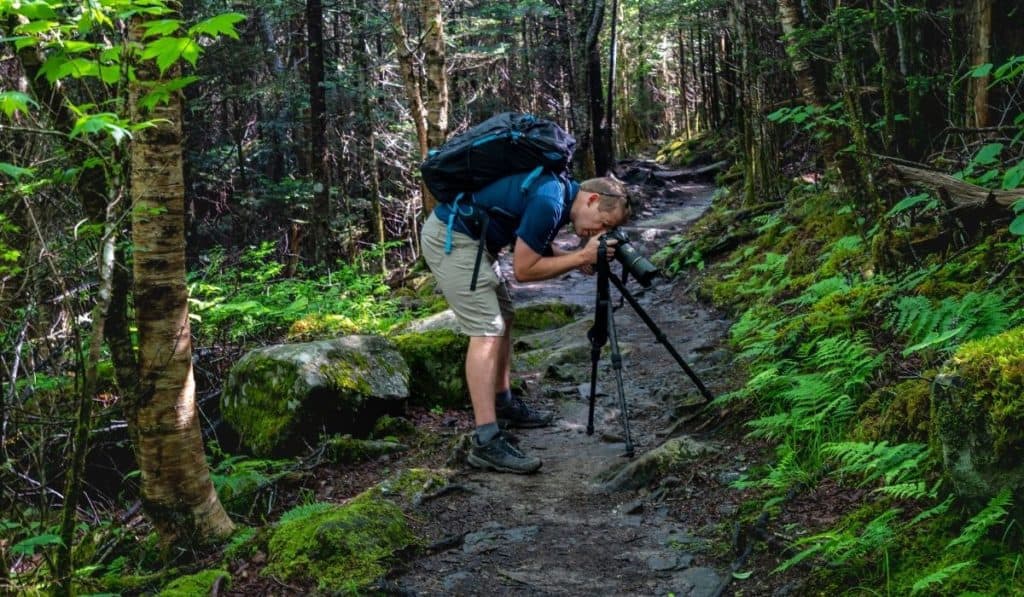Content Creation Tools: Camera Setup & High-Quality Audio Equipment


Let's be brutally honest. Your brilliant ideas and killer content strategy can only get you so far if your execution looks and sounds like it was filmed on a potato. Investing in high-quality equipment is crucial for content creators aiming to produce professional and engaging videos. A study by TechRadar highlights that cameras like the Canon EOS R100 and Sony ZV-1F are top choices among vloggers due to their compact design and superior image quality.
High-quality visuals and crisp, clear audio signal authority and respect for your audience. This guide breaks down the four foundational pillars of your content creator toolkit: cameras, microphones, headphones, and tripods. We’ll explore how to choose the right equipment for your needs and provide examples of gear that is popular among influencers and vloggers.
Sure, your smartphone is a powerhouse. But when you're ready to level up your content for platforms like Instagram and YouTube, a dedicated camera is non-negotiable. It's a gentle reminder that investing in what genuinely supports your vision can make a quiet but profound difference. The larger sensors and superior lenses in dedicated cameras capture more light and detail, giving you sharper images and stellar performance in any lighting.
Feeling overwhelmed by the options? Let's cut through the noise. Here are the key factors to consider.
Camera Type: DSLR vs. Mirrorless for Video
Sensor Size
A bigger sensor grabs more light, which means better image quality, especially when the lights get low. Full-frame is the gold standard, but APS-C and Micro Four Thirds sensors offer a fantastic balance of quality and cost.
Video Capabilities
If you're shooting video (Reels, YouTube vlogs, you name it), aim for at least 1080p (Full HD). But honestly, 4K is the new standard and gives you way more flexibility in post-production. Also, look for high frame rates (60fps or 120fps) to create that buttery-smooth slow-motion.
Autofocus System
For vloggers who do a lot of self-filming, a fast, reliable autofocus is your best friend. Eye-tracking and face-tracking autofocus are game-changers that keep you sharp and in focus, no matter what.
Screen and Viewfinder
A fully articulating or flip-out screen is a must-have for self-shooting. You need to see yourself to frame the shot perfectly.
Connectivity
Built-in Wi-Fi and Bluetooth are clutch for zapping files to your phone for quick edits and social media posts.
Obsessed with your 4K video quality? Congrats, you just made an IMAX film no one can hear.
Audio isn't just important; it's everything. Viewers will forgive grainy footage, but they will bounce immediately if your audio is a muffled, distorted mess. Your phone's built-in mic isn't going to cut it. An external microphone is a mandatory upgrade.
Here’s the breakdown of what to look for in high-quality audio equipment.
Microphone Type
Polar Pattern (Directionality)
Connectivity
Check for compatibility. Mics use connectors like a 3.5mm jack, USB-C, or Lightning for iPhones. Don't get caught without the right adapter.
Wired vs. Wireless

A tripod is your secret weapon for smooth, professional-looking footage. It’s absolutely essential for static shots, time-lapses, and filming yourself without a dedicated camera operator.
Sturdiness and Material
A tripod's number one job is to protect your expensive gear. Look for durable materials like aluminum or carbon fiber. Carbon fiber is lighter and stronger but will cost you more. Make sure it can handle the weight of your camera and lens without a single wobble.
Weight and Size
Think about your use case. For studio work, a heavier tripod adds stability. For travel vloggers, a lightweight, compact tripod is a must-have for portability.
Tripod Head
This is where your camera connects. A ball head is popular for its quick, fluid adjustments. For video, a fluid head is the pro choice, enabling silky-smooth pans and tilts.
Height and Flexibility
Check the max and min height. Some tripods have a center column that can be inverted or angled horizontally for creative low-angle shots. Flexible-leg tripods, like the famous Joby Gorillapod, can wrap around almost anything, giving you insane versatility.
Quick-Release System
This feature lets you snap your camera on and off the tripod in seconds. It's a massive convenience for creators on the move.

Your mic captures the sound, but headphones are how you know if it's any good. They are critical for catching problems like background hum, distortion, or weird level jumps that you'd miss on regular speakers.
Forget your flashy consumer headphones. For professional work, you need "studio" or "monitor" headphones designed for one thing: honest, uncolored sound.
Sound Profile (Frequency Response)
Look for a flat frequency response. This means the headphones don't artificially boost the bass or treble. You hear the audio exactly as it was recorded, which is crucial for making accurate editing decisions.
Open-Back vs. Closed-Back
Comfort
You'll be wearing these for hours. Comfort is key. Look for soft, breathable earpads (velour is a godsend) and an adjustable, padded headband.
Durability and Build Quality
Studio gear needs to be tough. Look for a sturdy build and a detachable, replaceable cable. The cable is almost always the first thing to go.
While these strategies are proven to work, every account is unique. Get a personalized audit that analyzes your specific account data and provides tailored recommendations for growth and monetization.